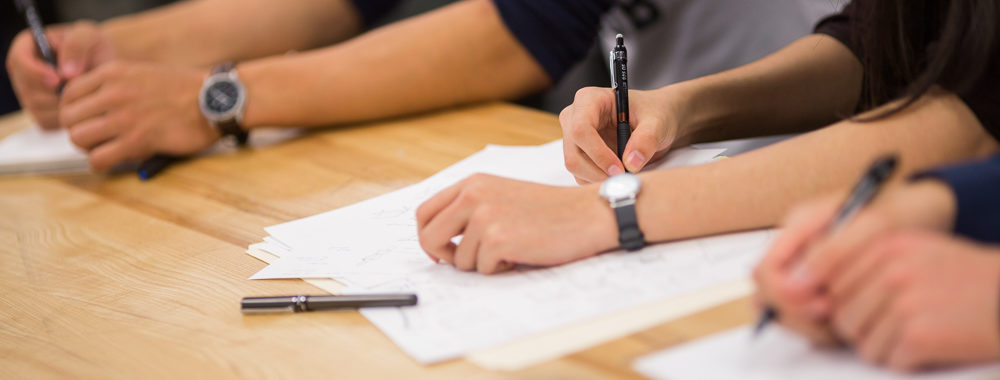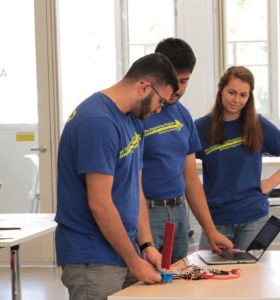
On an August afternoon in Jacobs Hall, groups of students huddled over tables in the building’s makerspace, discussing 3D models and tinkering with electronic components. These collaborative teams, all composed of incoming Berkeley undergraduates, were working on a deadline. They had limited time left to complete the prototypes that they would demo and pitch to guests the next day, bringing a close to three weeks of fast-paced design and fabrication work.
The students were participating in the Pre-Engineering Program (PREP), an immersion program for first-year students that offers an early introduction to the rigor of coursework at Berkeley’s College of Engineering. While all incoming students may apply for PREP, the program particularly focuses on low-income students, students who are the first in their families to attend college, and members of groups historically underrepresented in engineering. During the three-week residential program, which takes place before Golden Bear Orientation at the start of the school year, students take courses and discover resources on campus. Once the school year begins, PREP students take part in additional support activities, including dedicated discussion sessions and workshops on study skills, career preparation, and more.
The students prototyping at Jacobs Hall were part of a new short course developed as part of the summer immersion program this year, called Maker Design Studio and led by Scott Moura, assistant professor of civil and environmental engineering. “Teaching the PREP students is super-rewarding for me, because I graduated from this program 15 years ago,” says Moura, who teaches Design of Cyber Physical Systems in Jacobs Hall during the academic year.
His course focused on teaching students how to ideate, design, and prototype innovative engineering systems. Using a “sprint” design process, students prototyped smart products and systems in areas from health to earthquake monitoring, a wide-ranging group of projects linked by their focuses on societal-scale problems, hardware sensing and actuation, and data visualization. As they developed these projects, the students learned key design concepts and gained hands-on skills with tools like 3D printers, laser-cutters, and electronics, using Jacobs Hall’s makerspace and resources to bring their ideas to life. Through this kind of hands-on experience, Moura explains, “students get involved in team-based project work that helps form their identities as engineers.”
 On August 11, the students gathered in Jacobs Hall’s top-floor studio to present what they had created to their peers and to guests. Prior to the showcase, the students had learned about effective pitching, and it showed in their presentations, as they engaged the audience with descriptions of current challenges and clear explanations of how their products might offer solutions. One group presented a prototype for a better laptop lock, for example, while another group offered an Arduino-powered approach to limiting over-watering of lawns.
On August 11, the students gathered in Jacobs Hall’s top-floor studio to present what they had created to their peers and to guests. Prior to the showcase, the students had learned about effective pitching, and it showed in their presentations, as they engaged the audience with descriptions of current challenges and clear explanations of how their products might offer solutions. One group presented a prototype for a better laptop lock, for example, while another group offered an Arduino-powered approach to limiting over-watering of lawns.
“We have all crossed bridges to get to our successes, and to get to where we are today,” noted one student as she introduced her group’s project, a sensor-based solution for monitoring data on structurally deficient bridges. As her group and others presented their work and answered guest questions throughout the afternoon, they emphasized the roles of iteration, teamwork, and flexibility in their processes — skills they will take with them as they cross a new bridge and begin their Berkeley careers.